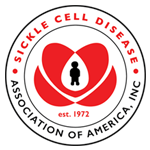On October 31, 2023, the Food and Drug Administration is poised to make a landmark decision about exagamglogene autotemcel (exa-cel) gene therapy for sickle cell disease. The Sickle Cell Disease Association of America holds the position that the approval of this therapy would be a major advance in the treatment of sickle cell disease; however, there are valid concerns about accessibility and the potential for adverse effects.
What is exa-cel, and how does it work?
Exa-cel (formerly CTX001) is a genetic therapy that uses CRISPR-Cas9 to disrupt the BCL11A gene in red blood cell precursors in the bone marrow. The BCL11A gene’s function is to tell red cells to stop producing fetal hemoglobin after birth. Exa-cel therapy locates the gene and cuts into it, effectively “turning it off.” As a result, red blood cells will have fetal hemoglobin again, which reduces the damage from sickle hemoglobin.
What is the treatment like?
Exa-cel is administered during a one-time infusion; however, there are steps that patients must take to prepare for the treatment. First, the patient’s care team will collect stem cells, which are the progenitors of red blood cells, from their body. Then, those cells will be edited in a lab. The patient will undergo chemotherapy to remove the original, abnormal stem cells from the body. After this process is complete, the treated stem cells are injected back into the patient during a process that is kind of like a transfusion (not surgery). The whole procedure is similar to autologous bone marrow transplantation, as there is no need to find a donor of stem cells. The Food and Drug Administration then recommends 15 years of monitoring for health issues post-treatment.
How effective is it?
Exa-cel provides a big reduction in acute episodes of sickle cell pain, on the timescale of a few years. Exa-cel has the potential to serve as a functional “cure” for sickle cell disease, but there are several unknowns. More years of follow-up will be needed to show whether exa-cel will also reduce the organ damage of sickle cell disease. Can the stem cells treated with exa-cel continue to produce non-sickling red blood cells for the rest of the person’s life, or will the stem cells die off over a certain number of years? Currently the treatment requires chemotherapy, which means there are also concerns about chemotherapy-associated complications, such as infertility or secondary cancer.
How accessible is it?
The high cost of gene therapy and eligibility restrictions are two of the main barriers we anticipate. Gene therapy treatments are produced through expensive, highly technical processes. The cost estimates are $2 million and up. The high price tags may be worthwhile, but FDA-approved high-cost medications come with insurance barriers and rules that are not evidence-based. Additionally, a large portion of the population will not be eligible for the treatment, including individuals with HBSC, which represents a third of U.S. population. We need to be careful that increasing the accessibility of gene therapy doesn’t reduce the accessibility of other sickle cell treatment options.
What does it mean for people living with sickle cell?
If the FDA approves exa-cel gene therapy for sickle cell disease, it could be a life-changing decision for many. Until now, the only way to cure sickle cell disease was through a bone marrow transplant, which is not a widely accessible option because it requires a matched bone marrow donor. Gene therapy does not require a donor; therefore, it has the potential to be a more widely available treatment. The approval of exa-cel would usher in a new age of treatment for sickle cell disease.
What does it mean for sickle cell treatment in the future?
Exa-cel would be the first gene therapy treatment approved by the FDA for sickle cell disease. It would open the door for other gene therapies to gain approval and help advance research into other potentially curative treatments. At the same time, there are concerns that the approval will create an increase in competition for health care resources that could make it difficult to access other forms of treatment outside of gene therapy. The eligibility criteria for exa-cel treatment have not yet been decided but may exclude people who have a viral chronic infection that could reactivate with the treatment. Others might be ineligible because they have a different genotype (HBSC) or have suffered too much organ damage already. Others might be too old or too young. It will be important to take good care of the body while waiting for possible gene therapy.
Will exa-cel affect the children of the person who was treated?
No, it should not. Exa-cel would treat only the stem cells that make blood cells. The eggs and sperm would not be touched by exa-cel. The genes of the eggs or sperm would still carry sickle cell genes to the children of the person who was treated with exa-cel, and their children could inherit the trait or have SCD.
What are the implications for the medical community at large?
More broadly, exa-cel would become the first FDA-approved CRISPR therapy for a genetic disease. This could have wide-reaching impacts for individuals with other conditions like cystic fibrosis, Tay-Sachs disease and others.
